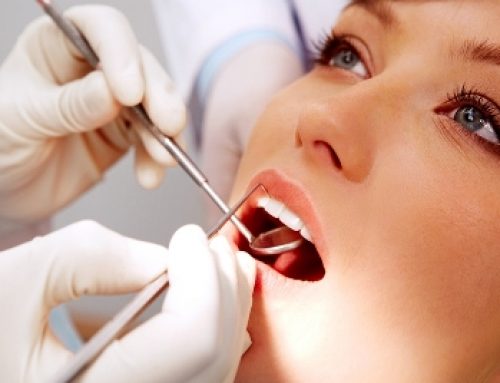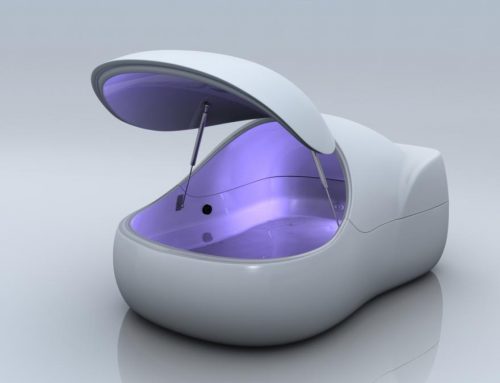The overall success rate for dental implants is solidly above 90 percent. However, some failures still occur for predictable and preventable reasons.
Dr. Michael Lee, a board-certified periodontist who specializes in prevention, diagnosis, and treatment of periodontal disease; and in the placement of dental implants, explained what you can do to maximize your chances of having a successful implant.
Choose the Right Doctor
Any licensed dentist can legally place implants, and many dentists take extra courses to learn implant techniques, earning the title “implantologist.”
However, implantologists don’t receive as much training for implants as periodontists or oral surgeons do—so if your case is complex, you should consider one of the latter, Lee said.
Periodontists, and oral surgeons have about the same level of training when it comes to implants, however the field of periodontics focuses on tissue structures in the mouth, so if you’ve had gum problems in the past or bone loss around your teeth, a periodontist might be a better choice.
If you want to be fully sedated at any time during the process, which is usually not necessary, then you should see an oral surgeon.

Be Wary of ‘Teeth in a Day’
When looking into implant procedures, you may see the buzzword “teeth in a day.” This phrase refers to implants that replace a full set of dentures and these advertisements may give you the impression that you can get a full set of teeth on the first day you walk into the dentist’s office.
But that is never the case, Lee said, because there is always a planning process, which includes diagnostic tests to assess whether you have enough bone to support implants.
Lee noted that in his experience, it is only possible for about 5 to 10 percent of patients who need a full set of teeth replaced, to get their permanent crowns on the same day the implants go in.
“It’s rare that you can actually do that in one day because everything has to be so ideal,” he said.
For patients who need only one tooth replaced, it is more likely they will be able to get a temporary crown the same day.
Temporary Crowns
Although most patients prefer to get the crown as soon as possible, dentists prefer to let the jawbone grow solidly around the titanium implant screw before placing the crown. This is because once the crown is on, the implant will have extra pressure on it, and if this happens prematurely, it could inhibit healing, Lee said.
For a front tooth, it is possible to put on a temporary crown the same day if the implant is stable enough to bear the load immediately after surgery. If not, you will need to wait three to six months, Lee said.
When patients get their implant and the permanent crown in a single day, which is known as “immediate restoration,” the success rate can drop to about 80 to 85 percent. Thus evaluating the situation of each individual patient is very important and planning the treatment process well is key to success, Lee said.
Set Realistic Expectations
Your bone density determines your treatment timeline. The total time from your first appointment to when you get a permanent crown, can be anywhere from three months to a year, depending on whether you need a bone graft.
When you come in for your first visit, the dentist should evaluate how much bone you have and how dense it is. The classes of bone density are numbered from one to four, with one being the hardest, most dense, and best for implants, and four being the softest and least able to hold on to the titanium screws.
Bone density helps implant success in the same way a wall stud helps a wall hold up a heavy painting without falling. If you drive a nail into “solid wood, it’s a lot steadier, as opposed to if you’re putting a nail into drywall,” Lee explained.
For patients with very thin jawbone ridges, growing more bone (bone augmentation) may be necessary before inserting an implant. This might involve getting a bone graft, which can take six months to heal, Lee said.
It can then take another six months after the implant is placed for the bone to heal around it.
Brush and Floss
One of the common reasons people lose teeth or have their implants fail is because they don’t take proper care of them, Lee said. The three most important things to do are brush, floss, and visit the dentist regularly.
One of the biggest misconceptions people have is “that once you get an implant, you don’t have to take care of it,” Lee said. But if plaque and bacteria build up around the implant, it can lead to infection and bone loss, causing the implant to fail.
Flossing is instrumental to implant success, he said. “Flossing is critical. Patients are generally compliant with brushing; they think if they brush but don’t floss, they will be okay—but that’s not always the case”
Smoking and Diabetes
Smoking and uncontrolled diabetes greatly increase the risk of implant failure.
Smoking prevents proper wound healing, which doesn’t allow the implant to become fully integrated into the bone. If you smoke while the implant is healing, you may hinder recovery “and the implant is at a risk of failure,” Lee said.
This does not mean that quitting the habit is a prerequisite for getting an implant, but doing so can significantly improve your chances of success. Cutting back on the number of cigarettes you smoke in the days and weeks after the implant is placed is very helpful, Lee said.
Uncontrolled diabetes also inhibits the healing process. So before getting an implant, it is advisable to get this condition under control under the supervision of your doctor.
Minimize Grinding Effect
Grinding can cause implants to fail even after they have been in your mouth for six months because the excessive side-to-side pressure can cause trauma, leading to bone loss around the implant.
You can still get implants if you grind or have a tense jaw, but you should mitigate the risks involved. Addressing the emotional or environmental stress triggers that cause grinding can be beneficial and for many people, wearing mouth guards at night can also protect the implants.
In addition, crowns can be made from stronger material, so you can “compromise aesthetics for something that’s more durable and is not going to fracture as easily,” Lee said.
Source: Theepochtimes.com







Leave A Comment